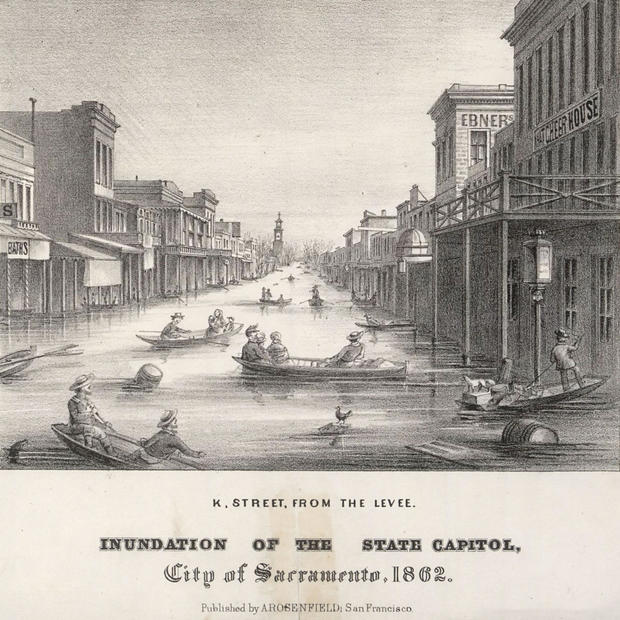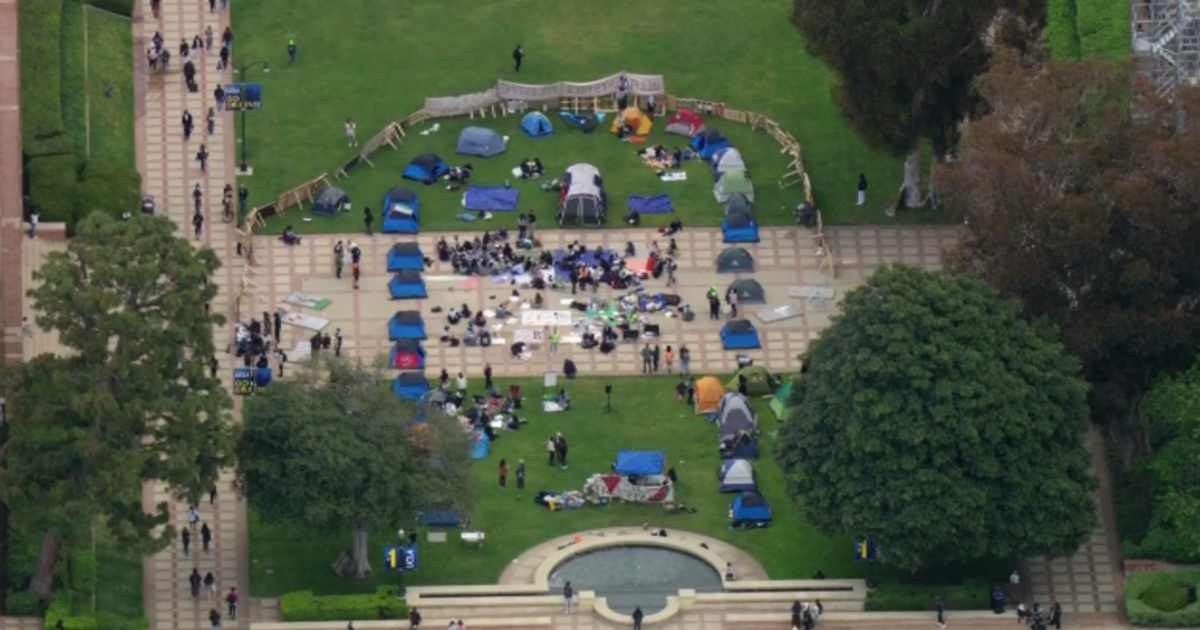UCLA study: Climate change-fueled storm could cause flooding "of biblical proportions"
Climate change has doubled the chances of a catastrophic storm causing devastating flooding that would likely displace millions of people and leave an area like Los Angeles under water, according to a UCLA study released Friday.
Researchers studying an "ArkStorm" scenario, or flooding of "biblical proportions," found that a modern-day storm mirroring the 30-day deluge of rain that inundated Sacramento in 1862 would generate 200% to 400% more runoff in the Sierra Nevada Mountains, due to more precipitation falling in the form of rain rather than snow.
"In the future scenario, the storm sequence is bigger in almost every respect," Daniel Swain, UCLA climate scientist and co-author of the paper published in the journal Science Advances, said in a statement. "There's more rain overall, more intense rainfall on an hourly basis and stronger wind."
Either of the two ArkStorm scenarios studied would involve a long series of storms fueled by atmospheric rivers over the course of a month.
"There are localized spots that get over 100 liquid-equivalent inches of water in the month," Swain said. "On 10,000-foot peaks, which are still somewhat below freezing even with warming, you get 20-foot-plus snow accumulations. But once you get down to South Lake Tahoe level and lower in elevation, it's all rain. There would be much more runoff."
Researchers say such a storm would cause "devastating landslides and debris flows" and lead to the displacement of 5 million to 10 million people due to flooding. And the full of evacuation of millions of impacted people would likely be impossible, even with weeks of notice of the pending storm, the study said.
The Great Flood of 1862, which occurred before the development of any flood-control infrastructure, led to flood waters that were 300 miles long and 60 miles wide. But even with modern flood-control measures, a similar event today would leave parts of cities like Sacramento, Stockton, Fresno, and Los Angeles "under water," causing an estimated $1 trillion in damages.
Predicting when a devastating storm could happen is an inexact science, but researchers say such storms traditionally occurred every 100 to 200 years previously – before the effects of climate change.






